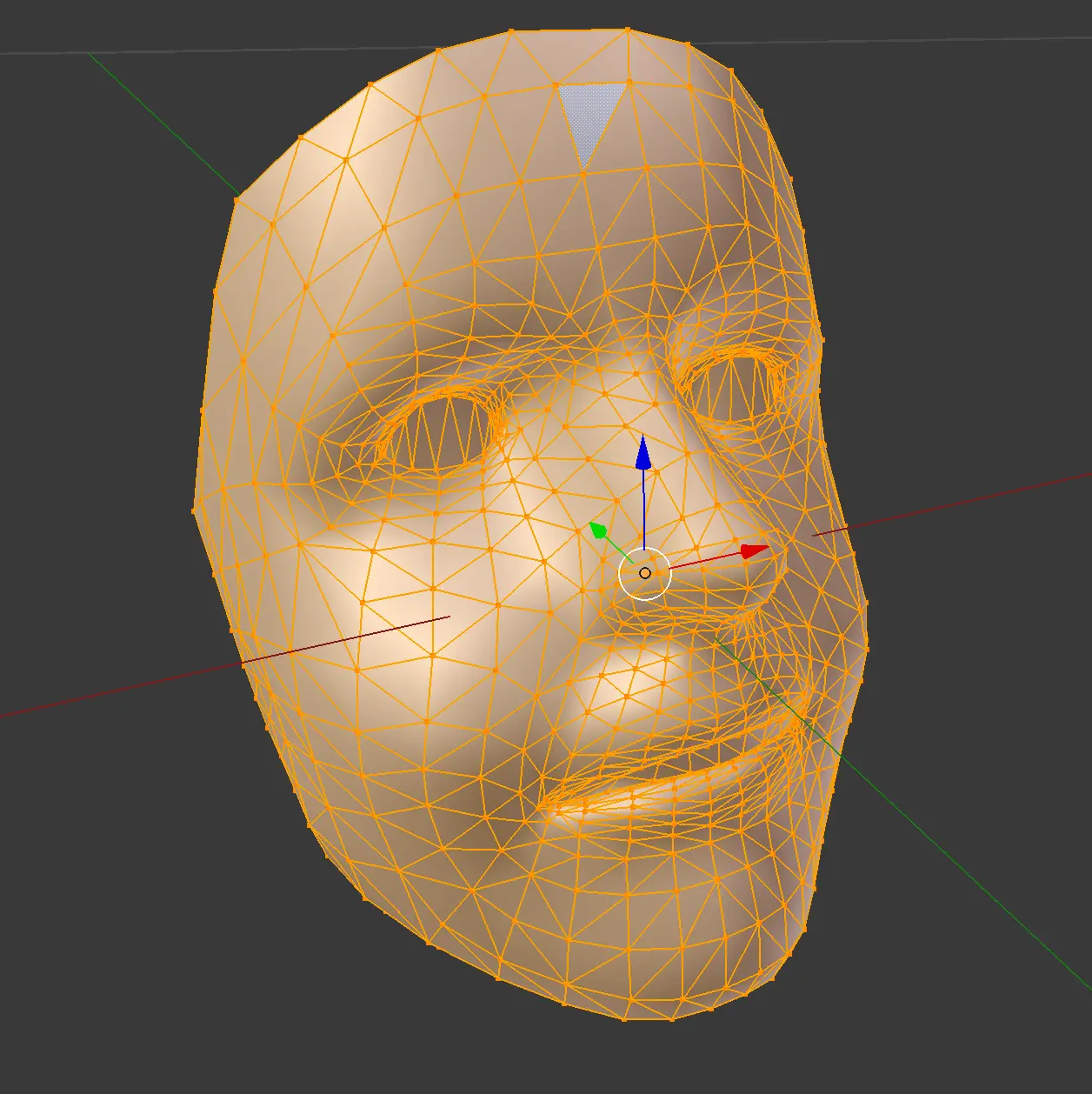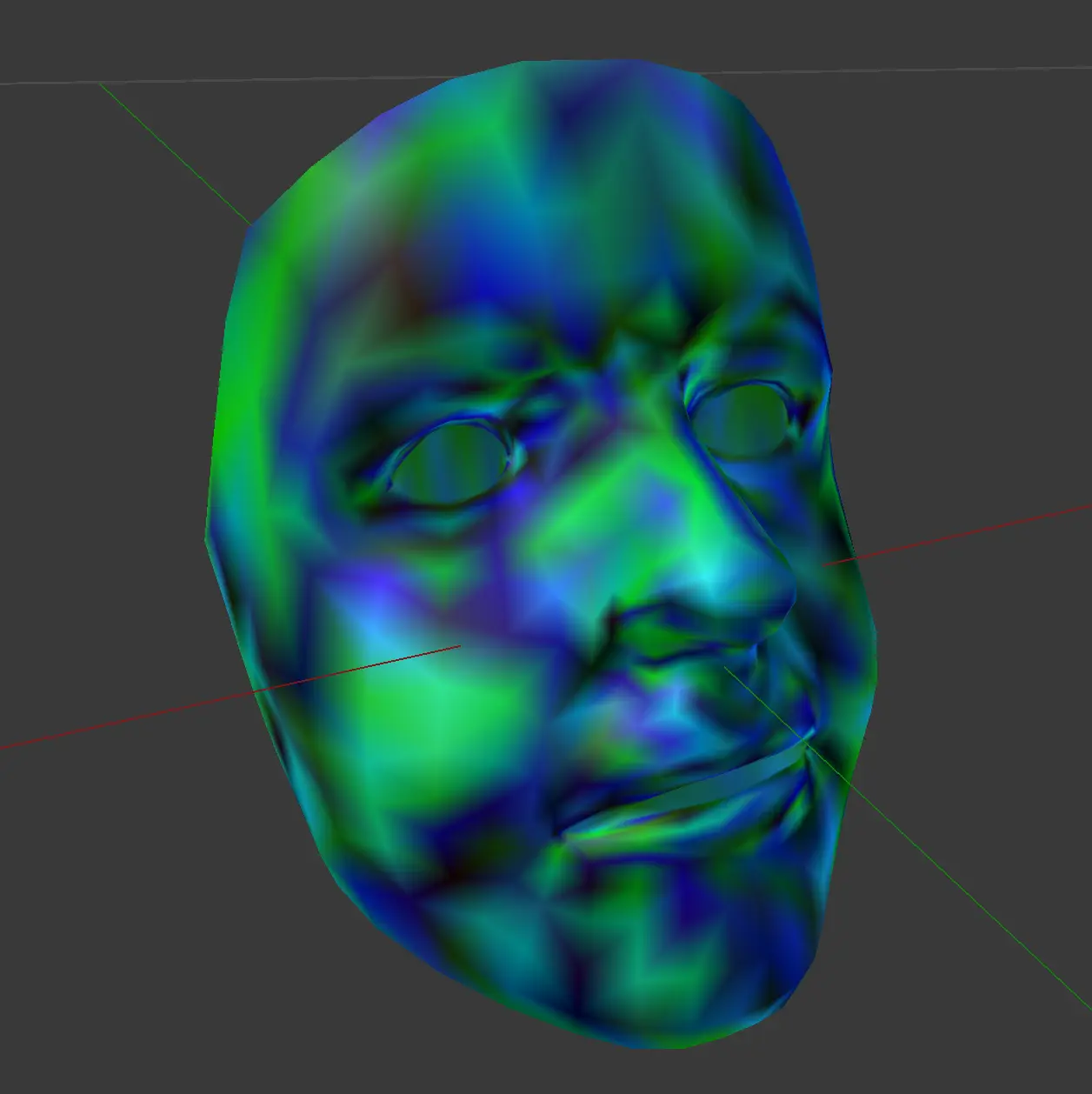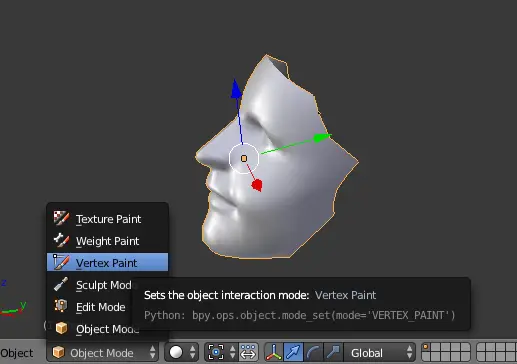Reference 3D models
Bone-driven face model
Bones are used to map significant points of interest in to the resulting model. The user doesn't have to define every bone in the resulting model that exist in our reference head. Bones can be tracking facial landmarks in which case they are defined by their names which are in the format of "jxx" where the "xx" part is the number of the bone in the reference model

Default face model
The default face model is a face model whose vertices are driven by DeepAR face tracking technology. Users of the SDK can use it as a starting point in creating their own effects in 3D modeling tools (like Blender or Maya).
Geometry
It's geometry (vertices) and deformators (bones and blend shapes) are used to drive the user-created masks. Below is the image of the default face model imported in Blender.

Reference model vertex color values

The reference model has a geometry that consists of 730 vertices, all of which are driven by the underlying face tracking technology.
Each vertex in a mesh can store an RGB color value. The engine uses this feature to differentiate every vertex by its unique color property and match it to the tracked feature point on the face.
The vertex colors have already been set in the provided reference model and shouldn't be changed or omitted when creating a new model - otherwise, the engine will not be able to track a given face feature point and the mesh will not display correctly when imported.
To check whether the vertex colors have been preserved, import the newly created .fbx model in Blender, select the face mesh and toggle Vertex Paint. It should look the same as the image above.

2D vertices
Models driven by 2D vertices should be placed in camera space. Vertex colors, or the number of vertices should not be changed.
Eyes
The eyes model tracks the vertices surrounding the eyes. It can be used for a more precise eyelid occlusion than the 3D vertices provide. The vertex colors aver been set in the eyes models and matched to the tracked feature points on the face.
Eyes and eyebrows model vertex color values
Lips
The lips model consists of 232 vertices driven by tracked 2D face vertices.
This model can be used for more precise lips tracking than the 3D vertices provide. The vertex colors aver been set in the lips model and matched to the tracked feature points on the face.
Lips model vertex color values